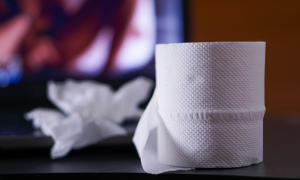
Should we be recommending STI testing for all sexually active heterosexual men?
Widespread screening for STIs in heterosexual men is deemed “not cost effective.” Should we reconsider?
ED is a subject that is not often talked about—it can be awkward and embarrassing for both and men and women to discuss, even with a health care provider. But talking about it, and learning about it, can help men and their partners understand and manage this common condition.
This last point is an important one to remember—there are solutions. The first step to that solution is talking to a health care provider to figure out what is causing ED. There are many things that can cause ED:
A health care provider can help figure out what is causing ED, and what treatment might be best.
ED isn’t just the problem of the person suffering from ED—their partner is affected as well. ED can cause a man to withdraw from sex and his partner. A female partner may blame herself, thinking that she is no longer desirable. She may also blame her partner and suspect infidelity as the cause behind his ED. A lack of communication can be destructive for couples dealing with ED. For men in relationships dealing with ED, talking with a partner is an essential part of managing the condition.
So how do couples start the conversation about ED?
There are a number of options to treat ED, depending on the cause. And since ED can often be the first sign of an underlying medical condition, discovering and treating this may help resolve the issues with ED as well as improve overall health.
This is perhaps the most well known treatment for ED, but not necessarily well understood. ED drugs have helped many men with erection difficulties, but they aren’t magic pills that rev up the sex drive, give men instant “super” erections and make them better lovers. What these prescription drugs do is increase blood flow to the penis—a man still needs to be sexually aroused to achieve an erection. They don’t affect libido or give a man without ED a “better” erection, so they aren’t meant to be used as recreational drugs to improve the sexual experience.
There are several FDA-approved oral treatments for ED, all of which work in largely the same way. These drugs do have side effects and may not work for every man. They are also not recommended for men taking certain medications, including some to treat high blood pressure and chest pain, as the combination of such drugs can be dangerous. A health care provider should review all of a man’s medications before deciding whether oral medication is a safe option.
And oral medications—prescribed by a qualified provider—are a safe and effective option. ED drugs and “alternative” treatments sold online with no prescription needed are not
For some men, a vacuum constriction device may be the best alternative. As the name suggests, the device is used to create a vacuum to stimulate an erection. The penis is placed in to pump (a tube, or cylinder). Air is manually pumped up, stimulating blood flow to the penis, which helps bring on an erection. To maintain the erection, the man will place a ring around the base of the penis. While success rates with this device vary, research showed that more than 90% of men can experience functional erection with a vacuum constriction device with adequate practice. But as with oral medications, this therapy is not right for all men.
Low testosterone is not a common cause of ED, but in some cases, testosterone therapy may be recommended. A man with testosterone deficiency will have symptoms other than ED, such as depression, a decreased interested in sex, and difficulty concentrating. Testosterone therapy can be given in different forms—including injections and patches—each of which has advantages and disadvantages. If hormone replacement is recommended by a health care provider, he or she will discuss which might be best.
An erection isn’t necessary for sexual satisfaction (or orgasm, for that matter). When managing ED, remember that there are many ways to please a partner and experience sexual pleasure. This can be an opportunity to expand your sexual boundaries as a couple and explore new practices, positions, and techniques. Keep the focus on pleasure, not an erection.
Learn the basics about erectile dysfunction—from causes, to treatment options, and relationship issues—with ASHA’s brief fact sheet, Ten Things to Know About Erectile Dysfunction.

Widespread screening for STIs in heterosexual men is deemed “not cost effective.” Should we reconsider?

Nongonococcal urethritis—or NGU—is an infection of the urethra caused by germs other than gonorrhea. The most common cause is chlamydia.

A new study found that testicles of human men contained tiny little shards of plastics, adding to concerns about the impact of our environment on reproduction.

We know that one important way to raise awareness about HPV-related cancer in men is by sharing stories of those who have experienced it. Here we share stories from three men on their experiences with HPV-related cancer.

A new paper suggests that there are biological and evolutionary reasons that we masturbate and looks to our ape ancestors for evidence. There is evidence starting around 40 million years ago that the ancestors of all monkeys and apes did indeed masturbate.

The FDA just approved a new erectile dysfunction treatment that can be sold over the counter. This gel goes directly on the penis, works in just 10 minutes, and has few side effects. Some experts, however, aren’t convinced it works all that well.
ASHA believes that all people have the right to the information and services that will help them to have optimum sexual health. We envision a time when stigma is no longer associated with sexual health and our nation is united in its belief that sexuality is a normal, healthy, and positive aspect of human life.
ABOUT
GET INVOLVED
ASHA WEBSITES
GET HELP
© 2025 American Sexual Health Association